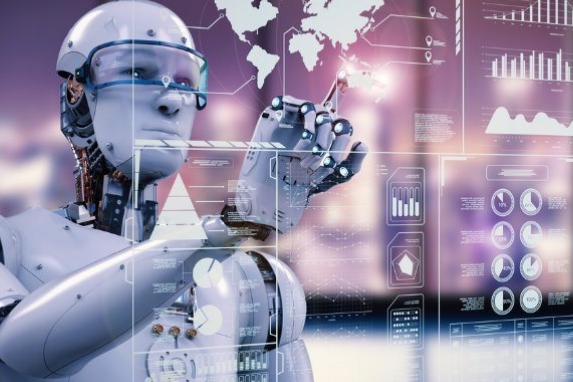
Harnessing the power of AI involves leveraging its capabilities to enhance various aspects of business,
society, and everyday life. Here’s a comprehensive guide on how to effectively utilize AI:








1. Enhancing Business Operations
AI can streamline and optimize numerous business processes, leading to increased efficiency and reduced costs.
Examples:
Automation: Implement AI-driven automation for repetitive tasks such as data entry, customer service through chatbots, and inventory management.
Predictive Analytics: Use AI to analyze historical data and predict future trends, helping businesses make informed decisions.
Personalization: AI can personalize marketing efforts and product recommendations, improving customer engagement and sales.
2. Improving Healthcare
AI is revolutionizing healthcare by enhancing diagnostics, treatment, and patient care.
Examples:
Medical Imaging: AI algorithms can analyze medical images to detect diseases such as cancer with high accuracy.
Predictive Health: AI can predict patient outcomes and identify high-risk patients, enabling preventative care.
Drug Discovery: AI accelerates the drug discovery process by identifying potential drug candidates and predicting their efficacy.
3. Advancing Education
AI can transform education by providing personalized learning experiences and improving administrative processes.
Examples:
Personalized Learning: AI-driven platforms can adapt to each student’s learning style and pace, providing customized content and feedback.
Tutoring Systems: AI tutors can assist students with their studies, offering help in subjects ranging from math to language arts.
Administrative Efficiency: AI can automate administrative tasks such as grading, scheduling, and student admissions.
4. Enhancing Customer Experience
AI can significantly improve the customer experience by providing quick, personalized, and efficient service.
Examples:
Chatbots and Virtual Assistants: These can handle customer inquiries, provide recommendations, and resolve issues 24/7.
Sentiment Analysis: AI can analyze customer feedback to gauge sentiment and improve products and services accordingly.
Personalized Recommendations: AI algorithms can analyze customer behavior to provide personalized product and content recommendations.
5. Strengthening Security
AI enhances security across various domains, from cyber to physical security.
Examples:
Cybersecurity: AI can detect and respond to cyber threats in real time, identifying patterns and anomalies that indicate breaches.
Fraud Detection: AI systems can analyze transactions and identify fraudulent activities, protecting businesses and consumers.
Surveillance: AI-powered surveillance systems can recognize faces, detect unusual activities, and enhance public safety.
6. Boosting Creativity and Innovation
AI can aid in creative processes and drive innovation across industries.
Examples:
Content Creation: AI tools can generate text, music, art, and videos, aiding creators in their projects.
Design and Prototyping: AI can assist in designing products, creating prototypes, and optimizing designs for better performance.
Research and Development: AI accelerates R&D by analyzing vast amounts of data, identifying patterns, and generating insights.
7. Optimizing Supply Chain and Logistics
AI can enhance supply chain management and logistics, making them more efficient and cost-effective.
Examples:
Demand Forecasting: AI predicts demand for products, helping businesses manage inventory and reduce waste.
Route Optimization: AI algorithms optimize delivery routes, reducing transportation costs and improving delivery times.
Supply Chain Transparency: AI provides visibility into the supply chain, identifying bottlenecks and improving efficiency.
8. Empowering Financial Services
AI transforms financial services by providing better insights, automating processes, and enhancing customer experiences.
Examples:
Robo-Advisors: AI-driven robo-advisors offer personalized investment advice based on individual goals and risk profiles.
Credit Scoring: AI improves credit scoring models by analyzing a wider range of data, enabling more accurate assessments.
Fraud Prevention: AI detects fraudulent transactions and activities in real time, protecting financial institutions and their customers.
9. Fostering Environmental Sustainability
AI can contribute to environmental sustainability by optimizing resource usage and monitoring environmental changes.
Examples:
Energy Management: AI optimizes energy usage in buildings and industrial processes, reducing consumption and emissions.
Environmental Monitoring: AI systems monitor environmental changes, such as deforestation and climate change, providing valuable data for conservation efforts.
Agriculture: AI improves agricultural practices through precision farming, optimizing water usage, and predicting crop yields.
Implementation Strategies
To harness the power of AI effectively, consider the following strategies:
Identify Use Cases: Determine the areas where AI can provide the most value and address specific challenges or opportunities.
Invest in Talent: Build a team with expertise in AI and data science, or partner with organizations that have the necessary skills.
Leverage Data: Ensure access to high-quality data, as it is crucial for training effective AI models.
Adopt Scalable Solutions: Choose AI solutions that can scale with your organization’s needs and adapt to changing requirements.
Ensure Ethical Use: Implement AI ethically, ensuring transparency, fairness, and accountability in its deployment.
Stay Updated: Keep abreast of the latest advancements in AI technology to continuously improve and innovate.
Conclusion
Harnessing the power of AI can lead to transformative changes across various sectors, driving efficiency, innovation, and improved experiences. By strategically implementing AI, organizations can unlock new opportunities and address complex challenges, paving the way for a more intelligent and connected future.

Leave a Reply